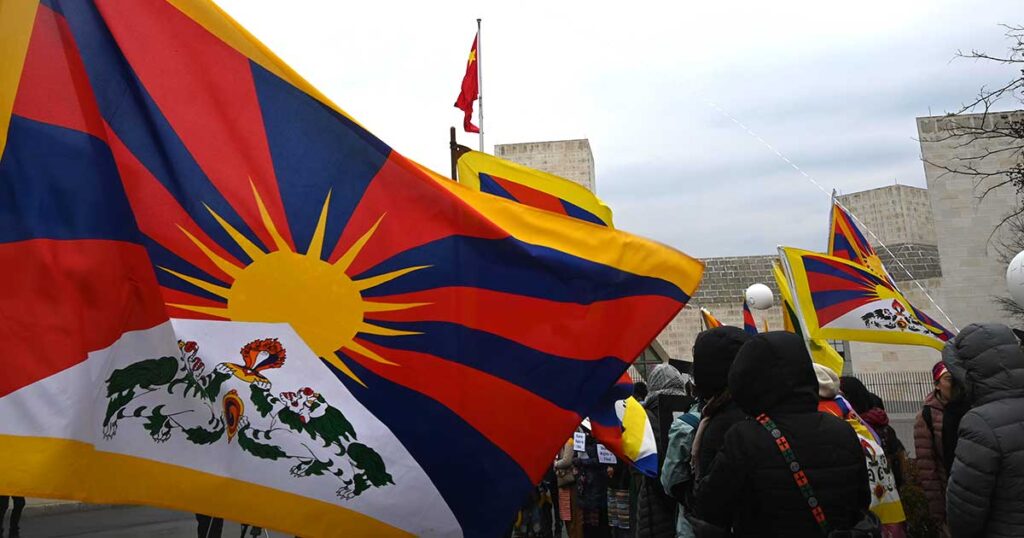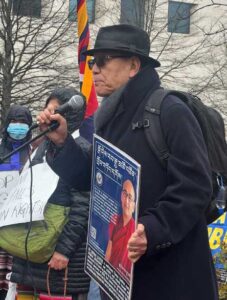
Tibetan flag flying at the rally before the Chinese Embassy in Washington, DC on March 10, 2023.
This year, on the 64th anniversary of the 1959 Uprising, I spoke at the rally before the Chinese Embassy in Washington, DC. Before I continue, I should mention that this year we also had the Chair of the newly established House Select Committee on China, Representative Mike Gallagher, come to offer his support to Tibet. This is significant because the bipartisan Select Committee (whose full name is “The United States House Select Committee on Strategic Competition between the United States and the Chinese Communist Party”) is being looked upon as a committee that will provide a path for the future of the US-China relationship taking into consideration the current attitude of the Beijing leadership and the need to protect American interests. Tibet is a core issue in the US-China relationship as reflected in testimony before Congress by senior State Department officials and successive reports on Tibet negotiations by the State Department, which say, “the lack of resolution of these problems leads to greater tensions inside China and will be a stumbling block to fuller political and economic engagement with the United States and other nations.”

Addressing the rally at the Chinese Embassy in Washington, DC on March 10 with a placard on political prisoner Go Sherap Gyatso with me.
Now coming back to my remarks at the rally this year, I outlined the following three messages from the 1959 Tibetan National Uprising.
First, the people in Tibet rose up to protect His Holiness the Dalai Lama, who is not only the spiritual leader of Tibetan Buddhists, but also a symbol of Tibet. They understood the strong bond between His Holiness and the Tibetan people. Sixty-four years later, the Dalai Lama continues to be a symbol of the Tibetan nation and people, and we need to do what we can to support his vision.
Secondly, in 1959, the Tibetan people in Lhasa rose up because they saw a threat to Tibet, the survival of Tibetan identity, culture, language, religion, way of life, etc., at the hands of Tenda Gyamar (“Red China, Enemy of the Faith”). Sixty-four years later, the threat to the survival of Tibetan identity posed by the misguided Chinese policies, including the Sinicization of all aspects of Tibetan life, continues. It is a credit to the determination and courage of the Tibetans in Tibet, who continue to confront the assault from the Chinese leadership and look for space to preserve their identity. We Tibetans need to see what we can do to meet these challenges and to overcome them.
Thirdly, in 1959, the Tibetan people rose up in desperation without any clear support from the international community. There were efforts made to reach out to neighboring countries as well as the United Nations. Sixty-four years later, the Tibetan issue has become an issue for concern by the international community, particularly those working in the human rights field. The international community needs to do more. Today, we can see the concern, and rightly so, on Ukraine. Since the international community does not desire conflict, it should adopt a universal policy of providing concrete support to the Tibetan issue, too, so that peace can be restored to the region.
I concluded by saying that one action that the United States can take is to pass the bipartisan and bicameral Promoting a Resolution to the Tibet-China Conflict Act that is before the Congress.
